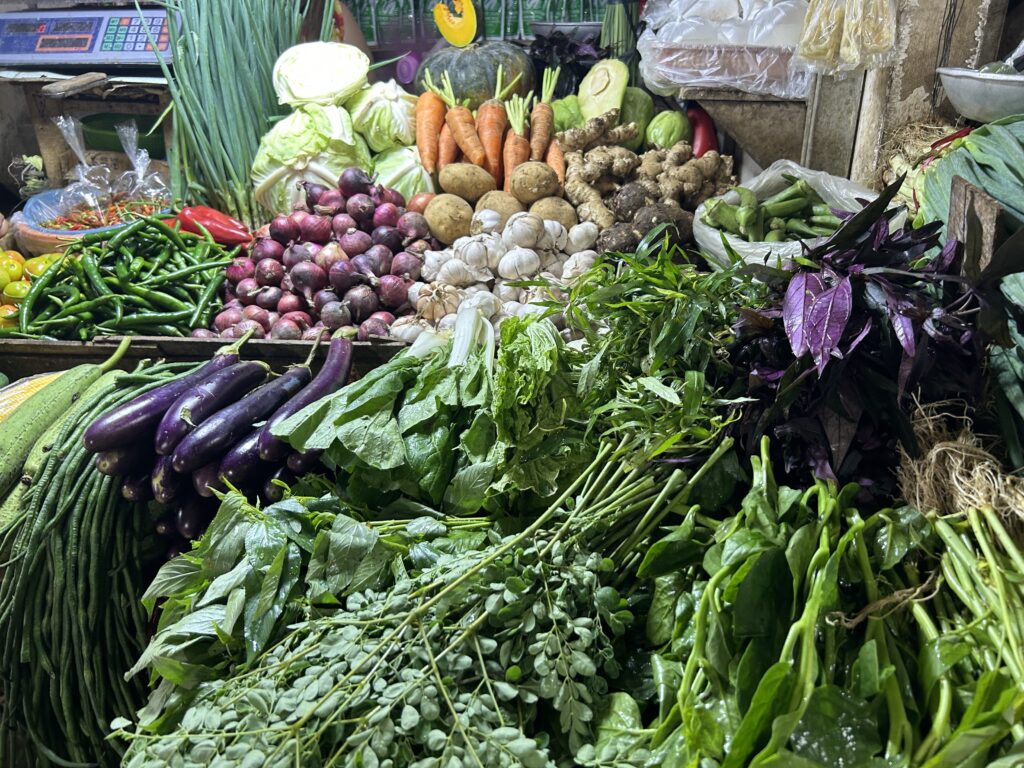Mandaue City’s inflation highest in Cebu for 5th month

Market Prices Cebu. Fresh vegetables are displayed for marketgoers at the Mandaue City Public Market. | Emmariel Ares
CEBU CITY, Philippines — Mandaue City has once again recorded the highest inflation rate in Cebu Province based on the inflation report by the Philippine Statistics Authority in Central Visayas (PSA-7) for May 2024.
Mandaue’s inflation rate dropped to 7.3 percent in May 2024 from 7.6 percent the previous month.
Despite this slight decrease, Mandaue City still has the highest inflation rate compared to Cebu Province and other highly urbanized cities (HUCs).
Lapu-Lapu City logged 5.8 percent, Cebu City 5.7 percent, and Cebu Province 2.3 percent.
The inflation report was presented by Melchor Bautista, PSA Cebu’s chief statistical specialist, on Thursday, June 13.
Bautista said that the main drivers to the downtrend of Mandaue’s May 2024 inflation rate was influenced by the decrease in the heavily-weighted food and non-alcoholic beverages at 5.7 percent (6.2 percent in April); housing, water, electricity, gas and other fuels at 16.6 percent (17.2 percent in April); and alcoholic beverages and tobacco at 8.8 percent (10.1 percent in April).
READ: Central Visayas inflation rate rises from 3.2 to 4.0% in May 2024
Meanwhile, the three commodity groups that have the greatly contributed to May 2024 inflation for Mandaue City were housing, water, electricity, gas and other fuels with 57.9 percent share; food and non-alcoholic beverages with 25.5 percent share; and personal care, and miscellaneous goods and services with 5.1 percent share.
Bautista said that the El Niño phenomenon may have affected the inflation rate in food and non-alcoholic beverages.
But in May, the specialist pointed out that celebrations such as fiestas and graduations affected the supply and demand for goods and services.
READ: Central Visayas inflation rate rises from 3.2 to 4.0% in May 2024
Furthermore, this marks the 5th time Mandaue City has recorded the highest inflation rate in Cebu since January.
In Cebu City, the main drivers of May’s inflation were increased prices of food and non-alcoholic beverages at 9.3 percent (5.3 in April); transport at 4.5 percent (4.2 percent in April); and clothing and footwear at 2.3 percent ( 2.0 percent in April).
Meanwhile, in Lapu-Lapu City, the commodity groups contributing most to inflation were food and non-alcoholic beverages with 37.6 percent share; restaurants and accommodation services with 36.2 percent share; and housing, water, electricity, gas and other fuels with 6.8 percent share.
In Cebu Province, the prices of food and non-alcoholic beverages contributed the most to the inflation rate, making up 101.1 percent of the increase. Restaurants and accommodation services followed with 12.9 percent, and alcoholic beverages and tobacco with 6.9 percent.
Inflation is the rate at which prices rise over time, reducing the purchasing power of money, as defined by the PSA.
According to Melchor Bautista, chief statistical specialist at PSA Cebu, a higher inflation rate can benefit the business sector economically.
However, for consumers, this means they have to pay more for the items they typically purchase, which can be challenging. /clorenciana
Disclaimer: The comments uploaded on this site do not necessarily represent or reflect the views of management and owner of Cebudailynews. We reserve the right to exclude comments that we deem to be inconsistent with our editorial standards.
